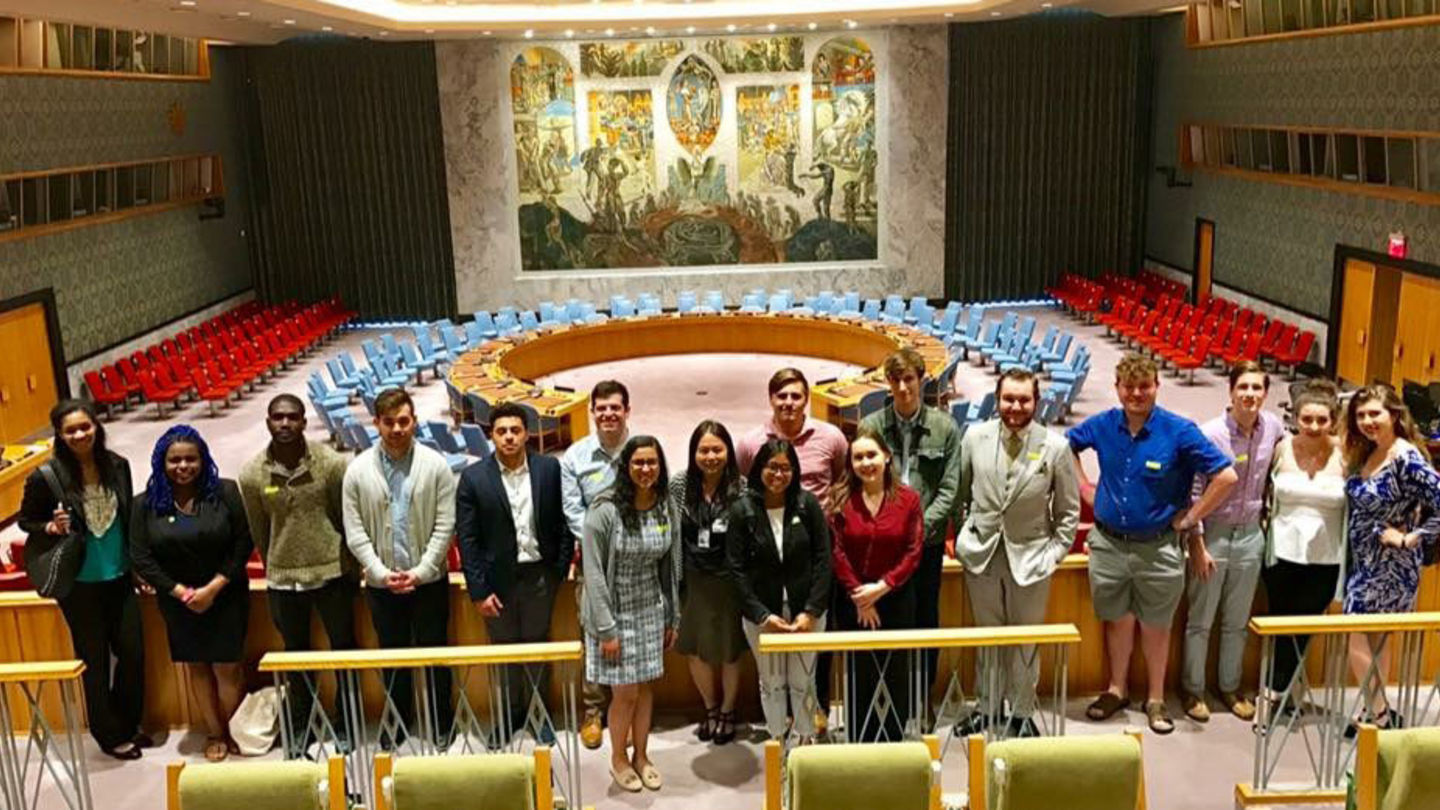
By: Verina Bols and Calvin Thrall
Delta Rho Chapter, Pi Sigma Alpha
The hustle and bustle of early morning Lower Manhattan was already in full swing by the time our bus, full of Temple students who participate in Pi Sigma Alpha and the Political Science Society, arrived at the Federal Reserve Bank of New York at 9 a.m.
After passing through the required security check, we were led through the bank's cathedral-like halls and chambers until we reached the entrance to the Federal Reserve museum. Before entering, a museum employee made it clear that cell phone use was prohibited. Once inside the museum, Research Economist and Vice President of Macroeconomic and Monetary Studies Marco Del Negro gave us a brief overview of the Fed and his role with the bank. Dr. Del Negro spent nearly 30 minutes fielding our questions about monetary policy and the state of the Federal Reserve System.
After the Q&A session, our guide announced that it was time to begin our tour of the Federal Reserve Museum. We moved through the museum quickly and efficiently, stopping to admire historical artifacts (such as a teller window from the early 20th century) and modern exhibits (such as a box of cash containing 300,000 $1 bills), while our tour guide expertly recounted the Fed's history and the development of its functions over time. We were dismayed to learn that the bank's gold vault was closed to visitors due to activity, but our parting gift lifted our spirits: each student left the bank with a small bag of shredded $100 bills.
After a lunch break spent wandering the busy streets, we took our tour of the United Nations. We walked past the dozens of flags and into the tour starting point. There were portraits all around us of the previous UN secretaries-general, as well as stunning photographs of UN peacekeeping missions from around the world. Hisham, our Algerian tour guide, started by telling us about the history and initial goals of the United Nations, and how the UN headquarters is technically an international territory, not a part of the United States. He led us through the different councils—including the Security Council and the Economic and Social Council—with stunning designs that exemplified the importance of decisions and their effects on the world. We were shown a full-wall mosaic piece completed by American artists in Italy that focused on the Golden Rule and the overall mission of the United Nations. We spoke with Hisham about the complexity of peacekeeping missions, how different nations fund the UN, and how the system was devised. After the tour, we spent time discussing this information, looking at trinkets from countries around the world in the UN gift store, and skimming books at the library.
We returned from NYC with a renewed understanding of the significance of political institutions, both domestic and international.
